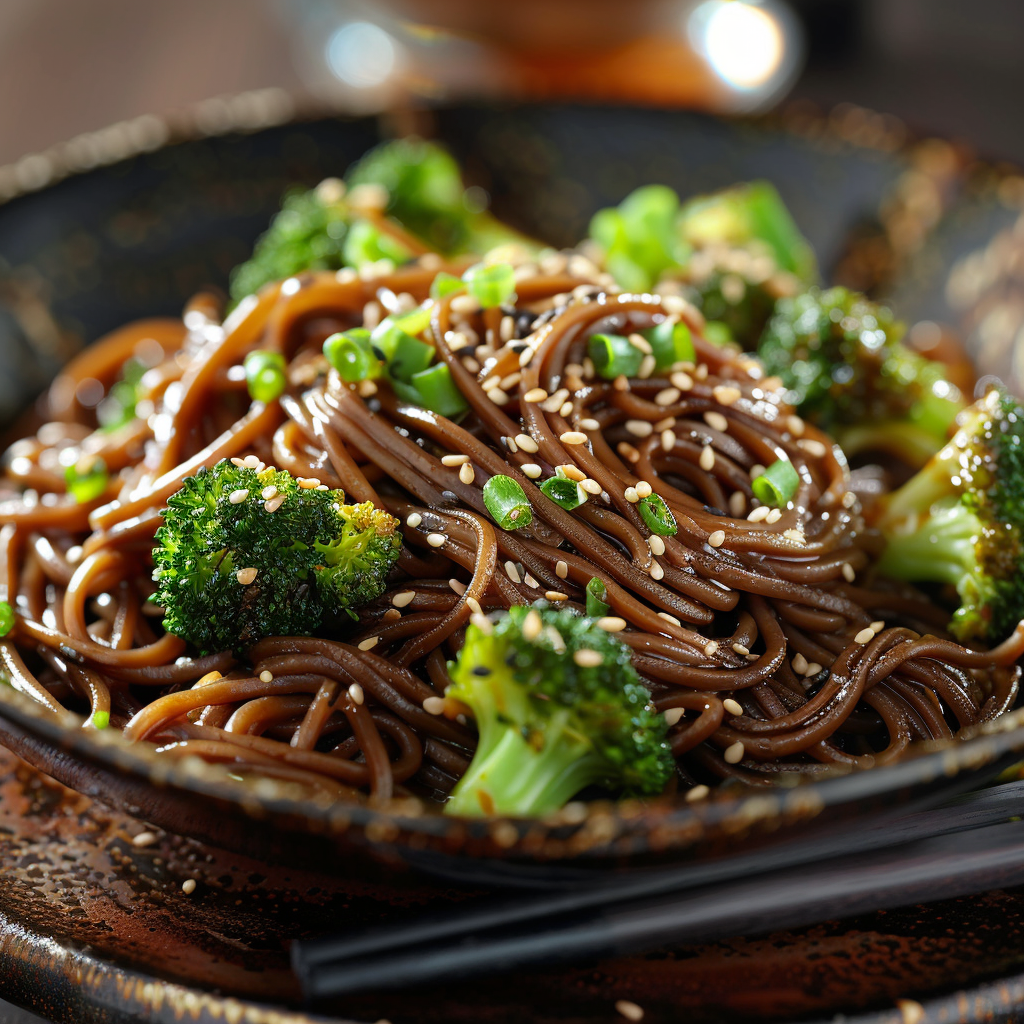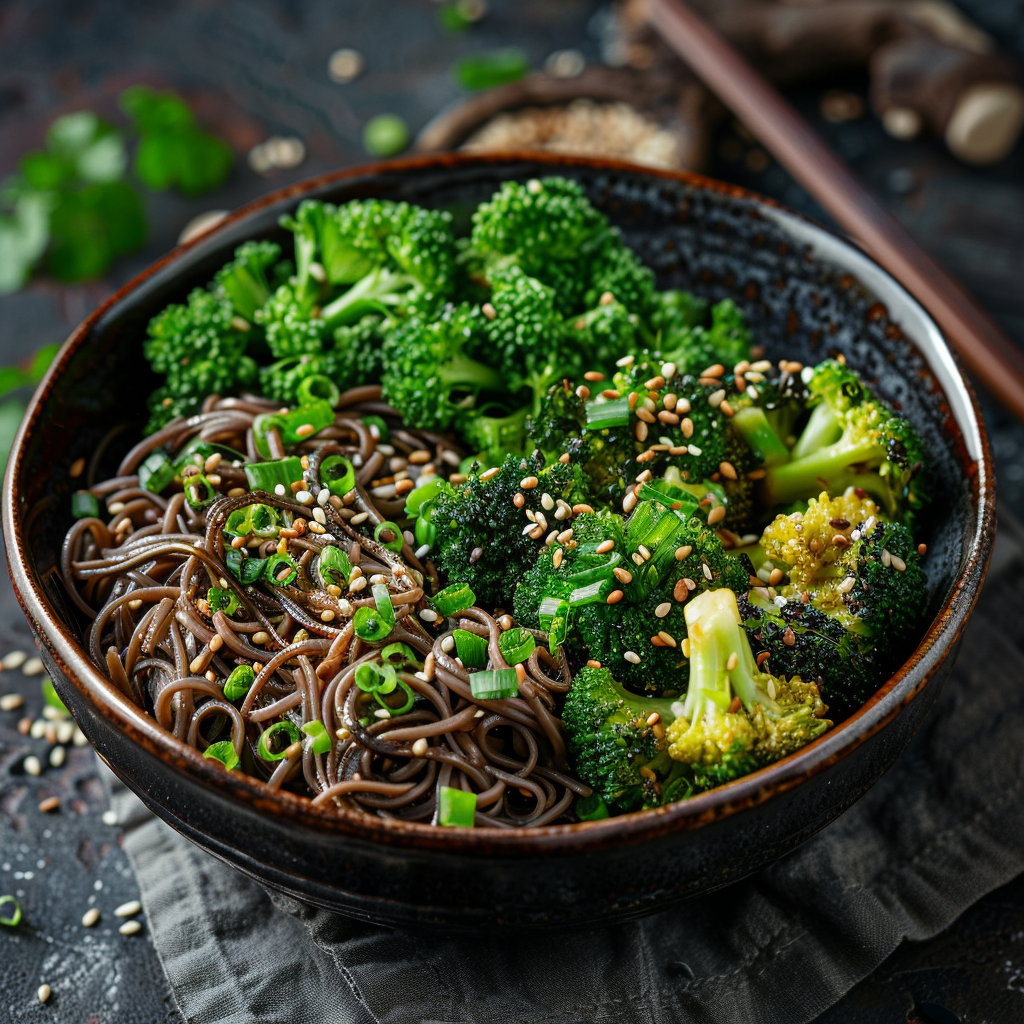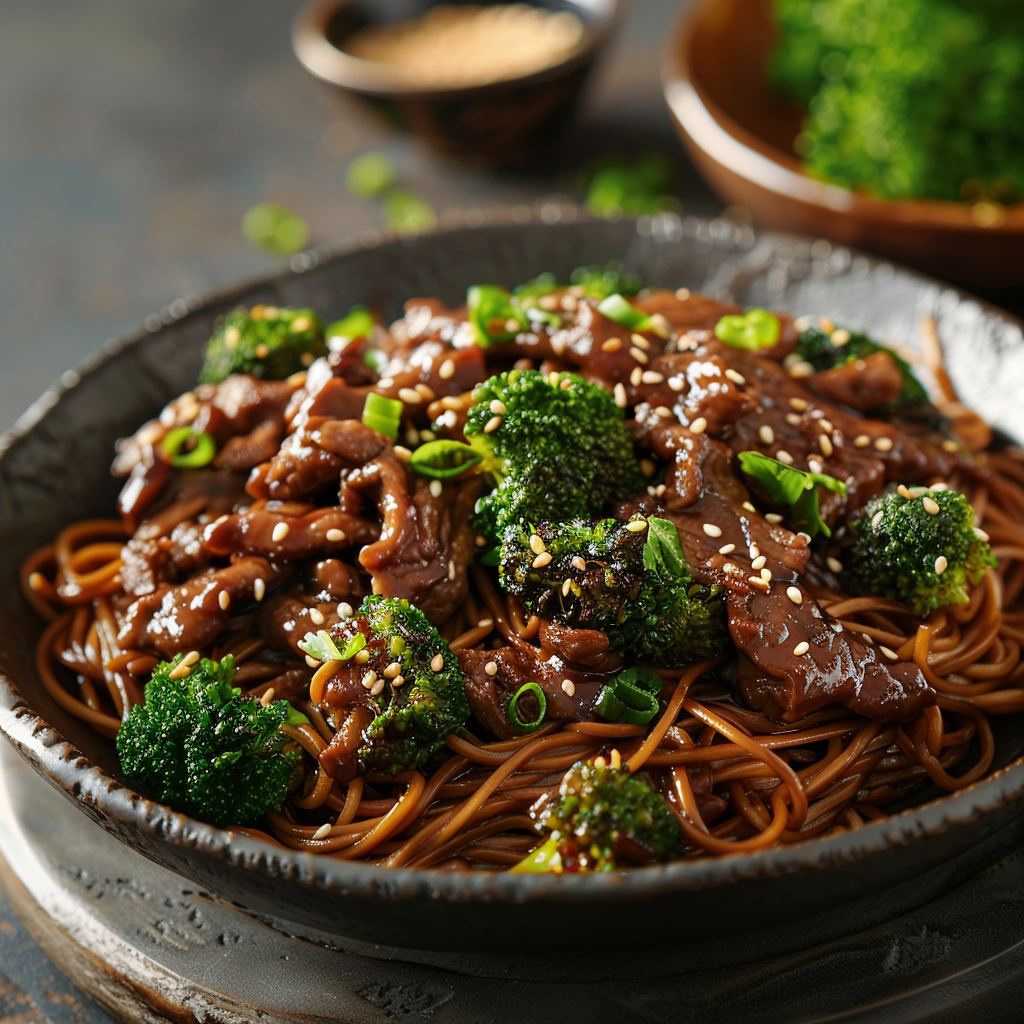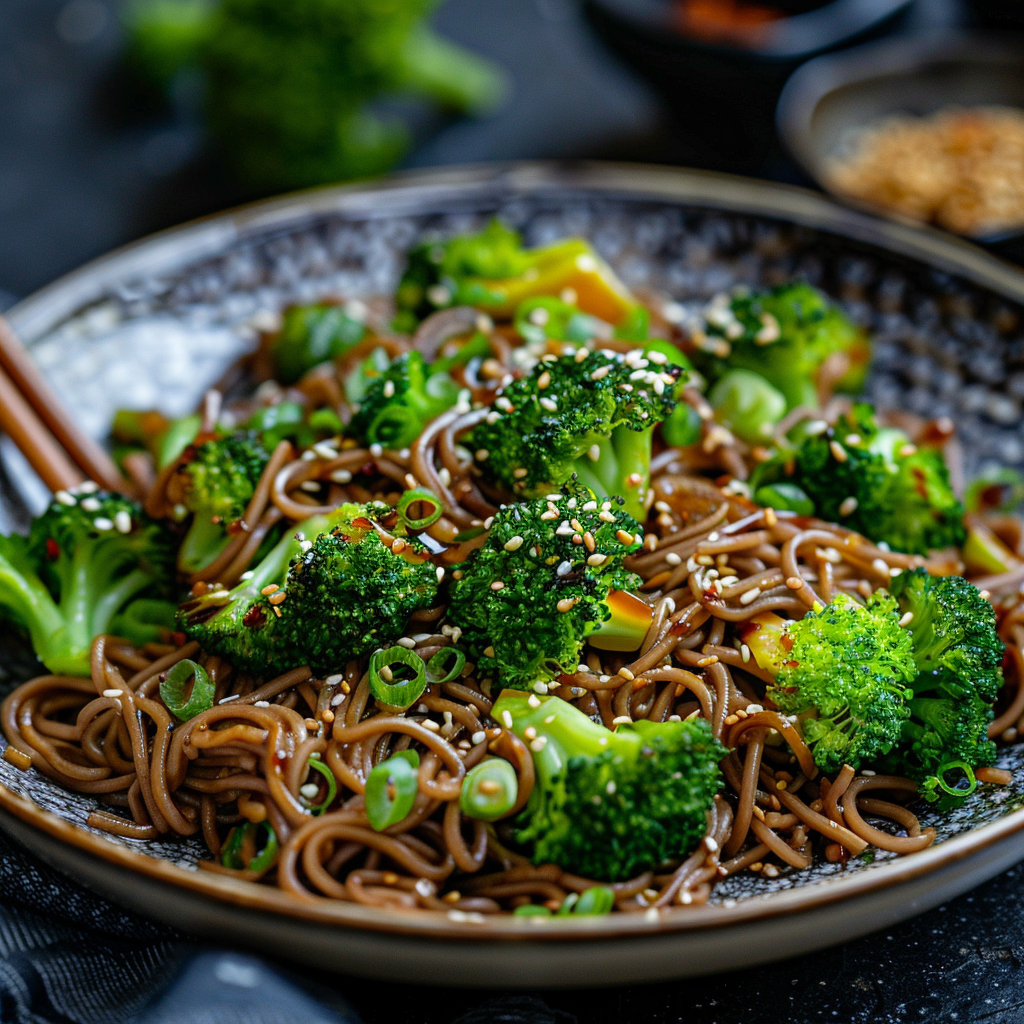Why This Black Bean Noodles Vegetarian Recipe is a Game-Changer
Let me take you back to a rainy Sunday afternoon. My kids were arguing over who got the last slice of pizza, and I was staring at an almost-empty fridge. That’s when I discovered the magic of black bean noodles vegetarian recipe. It’s hearty, flavorful, and perfect for feeding a crowd without breaking the bank. Plus, it’s versatile enough to suit vegans, vegetarians, and even meat-lovers. Trust me, once you try this dish, you’ll wonder how you ever lived without it!
A Little History Behind Black Bean Noodles
Black bean noodles, also known as Jajangmyeon in Korean cuisine, have a rich history. Originating from China, they made their way to Korea in the late 19th century. Traditionally, Jajangmyeon includes pork, but over time, creative cooks have adapted it into a delicious vegetarian-friendly dish. When I first tried making this black bean noodles vegetarian recipe, I was amazed at how simple it was to create something so satisfying. It’s like a warm hug in a bowl, packed with umami goodness.
Why You’ll Love This Recipe
This black bean noodles vegetarian recipe is a flavor bomb. The rich, savory sauce clings to every strand of noodle, while the veggies add crunch and color. It’s quick to make, uses pantry staples, and is budget-friendly. Whether you’re cooking for yourself or hosting a dinner party, this dish will impress everyone. Plus, it’s super customizable—add tofu, mushrooms, or even zucchini if you’re feeling adventurous.
Perfect Occasions to Whip Up This Dish
This recipe shines on busy weeknights when you need something fast and filling. It’s also great for potlucks, family dinners, or even meal prep. I once made it for a friend’s birthday, and she declared it “better than takeout.” If you’re wondering, Are Jajangmyeon and black bean noodles the same?, the answer is yes—but this version skips the meat, making it a vegetarian delight.
Ingredients
- 8 oz fresh or dried noodles (udon or wheat noodles work well)
- 2 tbsp fermented black bean paste
- 1 tbsp soy sauce
- 1 tbsp sesame oil
- 1 medium onion, thinly sliced
- 1 red bell pepper, julienned
- 1 cup chopped zucchini
- 1 cup cubed firm tofu
- 2 cloves garlic, minced
- 1 tsp sugar
- 2 tbsp vegetable oil
- Sesame seeds and chopped green onions for garnish
Substitution Options
- Swap tofu with tempeh or seitan for added texture.
- Use tamari instead of soy sauce for a gluten-free option.
- Replace zucchini with eggplant or mushrooms for a deeper flavor.
Preparation Section
Step 1: Cook the Noodles
Start by boiling water in a large pot. Add your noodles and cook them according to the package instructions. Fresh noodles usually take 3-4 minutes, while dried ones may need 7-8 minutes. Drain and set aside. Pro tip: Toss the cooked noodles with a little sesame oil to prevent sticking. This step ensures your noodles stay silky smooth and ready for the sauce.
Step 2: Sauté the Veggies
Heat vegetable oil in a large skillet over medium heat. Add the sliced onion and sauté until translucent. Next, throw in the garlic, bell pepper, and zucchini. Stir-fry for about 5 minutes until the veggies are tender but still crisp. The colors should pop, and the kitchen will smell amazing. Don’t rush this step—it builds the foundation of flavor.
Step 3: Make the Sauce
In a small bowl, mix the black bean paste, soy sauce, sugar, and a splash of water to thin it out. Pour this mixture into the skillet with the veggies. Stir well to combine, letting the sauce simmer for 2-3 minutes. The aroma will be irresistible, trust me. Chef’s tip: Taste the sauce and adjust the seasoning. A pinch more sugar can balance the saltiness of the black bean paste.
Step 4: Combine Everything
Add the cooked noodles and cubed tofu to the skillet. Toss everything together until the noodles are coated in the glossy sauce. Cook for another 2 minutes to heat through. Your kitchen will smell like a cozy restaurant by now. Garnish with sesame seeds and chopped green onions before serving.
Timing
- Prep Time: 10 minutes
- Cooking Time: 20 minutes
- Total Time: 30 minutes
Chef’s Secret
For an extra layer of flavor, roast the zucchini and bell peppers before adding them to the sauce. This caramelizes their natural sugars and adds a smoky depth that pairs beautifully with the black bean paste.
Extra Info
Did you know that fermented black beans are actually soybeans? They’re aged and salted to develop their unique umami flavor. This ingredient has been used in Chinese cooking for centuries and is a staple in many Asian kitchens.
Necessary Equipment
- Large pot for boiling noodles
- Skillet or wok
- Wooden spoon or spatula
- Small mixing bowl
Storage
To store leftovers, transfer the dish to an airtight container and refrigerate for up to 3 days. Reheat gently on the stovetop with a splash of water to loosen the sauce. Freezing isn’t recommended as the noodles can become mushy. If you’re prepping ahead, cook the components separately and assemble just before serving. This keeps the textures intact and flavors vibrant.
Tips and Advice
Always taste as you go. Adjust the seasoning to suit your palate. If the sauce feels too thick, add a tablespoon of water or broth. For a spicier kick, toss in some chili flakes or sriracha. Remember, cooking is all about making it your own!
Presentation Tips
- Serve in shallow bowls to showcase the colorful veggies.
- Garnish generously with sesame seeds and green onions.
- Add a lime wedge on the side for a fresh touch.
Healthier Alternative Recipes
Here are six variations to make this dish healthier:
- Zucchini Noodle Version: Swap regular noodles with spiralized zucchini for a low-carb option.
- Quinoa Base: Use cooked quinoa instead of noodles for added protein and fiber.
- Gluten-Free: Opt for rice noodles and tamari to keep it gluten-free.
- Low-Sodium: Use low-sodium soy sauce and reduce the black bean paste by half.
- Vegan Protein Boost: Add edamame or chickpeas for extra plant-based protein.
- Spice It Up: Include diced jalapeños or red pepper flakes for metabolism-boosting heat.
Common Mistakes to Avoid
Mistake 1: Overcooking the Pasta
Overcooked noodles turn mushy and ruin the texture of the dish. Always check the package instructions and taste-test a minute before the suggested time. Pro tip: Undercook them slightly since they’ll finish cooking in the sauce.
Mistake 2: Skipping the Veggie Sauté
Some folks dump raw veggies into the sauce, but sautéing them first brings out their sweetness and enhances the overall flavor. Take the extra few minutes—it’s worth it!
Mistake 3: Using Too Much Sauce
A little black bean paste goes a long way. Start with 1-2 tablespoons and adjust based on your taste. Too much can overpower the other ingredients.
FAQ
Are black bean noodles healthy?
Yes, they can be! Black bean paste is rich in protein and minerals, and using plenty of veggies makes this dish nutritious. However, watch the sodium content, especially if you’re using store-bought paste.
Can Jajangmyeon be vegetarian?
Absolutely! Traditional Jajangmyeon contains pork, but this black bean noodles vegetarian recipe proves that you don’t need meat to enjoy its bold flavors.
Are Jajangmyeon and black bean noodles the same?
Yes, they’re essentially the same dish. Jajangmyeon is the Korean name, while black bean noodles refer to the general concept. This version is meat-free.
Do black bean noodles have meat in them?
Not in this recipe! We’ve omitted the meat entirely, focusing on veggies and tofu for a plant-based twist.
How do I store leftover black bean noodles?
Store in an airtight container in the fridge for up to 3 days. Reheat gently on the stovetop with a splash of water.
What can I use instead of black bean paste?
If you can’t find black bean paste, try hoisin sauce mixed with a bit of miso for a similar umami kick.
Is this dish kid-friendly?
Yes! Kids love the mild sweetness and soft noodles. You can omit spicy elements if needed.
Can I freeze this dish?
It’s not ideal because the noodles can become mushy upon thawing. Instead, freeze the sauce separately and cook fresh noodles when ready to serve.
How do I make the sauce less salty?
Dilute the black bean paste with a bit of water or broth. Adding a teaspoon of sugar can also help balance the saltiness.
What type of noodles work best?
Wheat or udon noodles are traditional, but rice noodles or even spaghetti can work in a pinch.
Final Thoughts
This black bean noodles vegetarian recipe is more than just a meal—it’s a celebration of bold flavors and simple ingredients. Whether you’re new to cooking or a seasoned pro, this dish will quickly become a favorite. So grab your apron, gather your ingredients, and let’s get cooking!

Black Bean Noodles Vegetarian Recipe
Ingredients
Equipment
Method
- Start by boiling water in a large pot and cook the noodles according to the package instructions. Drain and set aside.
- Heat vegetable oil in a large skillet over medium heat and sauté the sliced onion until translucent.
- Add the garlic, bell pepper, and zucchini, stir-frying for about 5 minutes until the veggies are tender but still crisp.
- In a small bowl, mix the black bean paste, soy sauce, sugar, and a splash of water, then pour the mixture into the skillet with the veggies, simmering for 2-3 minutes.
- Add the cooked noodles and cubed tofu to the skillet, tossing everything together until the noodles are coated in the sauce. Cook for another 2 minutes.
- Garnish with sesame seeds and chopped green onions before serving.



